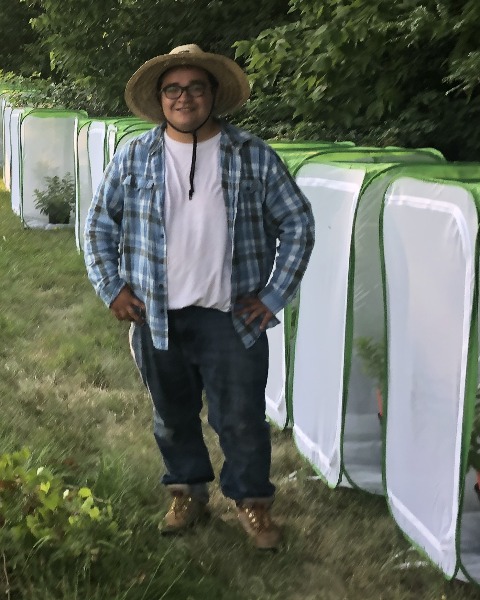Poster Display
Plant-Insect Ecosystems
D3459: Area-wide control of box tree moth in western New York
- GS
Gregory S. Simmons
Supervisory Agriculturist
USDA-APHIS
Salinas, California 
Alejandro Del-Pozo
Assistant Professor of Entomology
Virginia Tech
Virginia Beach, Virginia- DR
David J. Rivera (he/him/his)
Student
Virginia Tech
Blacksburg, Virginia - EG
Eugenia Garcia Bejarano
USDA-APHIS
Salinas, California - TG
Treya Gough
USDA-APHIS
Lockport, New York - MW
Mackenzie Wahl
USDA-APHIS
Lockport, New York - LM
Leila Milner
Virginia Tech
Virgina Beach, Virginia 
Devin Barry Calpo (they/them/theirs)
PhD student
Virginia Tech
Virginia Beach, Virginia- BH
Britaney Hight (they/them/theirs)
Entomology Lab Aide
Virginia Tech
Virginia Beach, Virginia
Presenting Author(s)
Co-Author(s)
The box tree moth (BTM), Cydalima perspectalis (Walker, 1859) (Lepidoptera: Crambidae) an invasive insect from East Asia, is a serious pest of boxwood in the genus Buxus, which are popular worldwide as ornamental hedges. Larvae of BTM feed on leaves and bark, causing rapid defoliation and girdling of boxwood leading to plant death. BTM spread rapidly across Europe in the last decade decimating native boxwood forested areas and landscape plantings across the continent. It was first recorded in North America in Toronto, Canada (2018), and has since spread to New York (2021), Michigan (2022), and Ohio and Massachusetts (2023). Forty-four U.S. states produce boxwood, the top 10 states selling boxwood are Oregon, California, Texas, Ohio, Illinois, New Jersey, Tennessee, North Carolina, Michigan, and Florida, with an estimated total annual value of $140 million.
A two year area-wide control demonstration project conducted on about 80 acres in a heavily infested urban landscape using mating disruption and coordinated Btk treatments showed that it is possible to effectively control BTM to near zero population levels compared to control no-treatment areas. The potential for adopting these area-wide control tools to support local eradications in newly infested residential and commercial landscapes as part of a slow-the-spread program is discussed.

.png)
